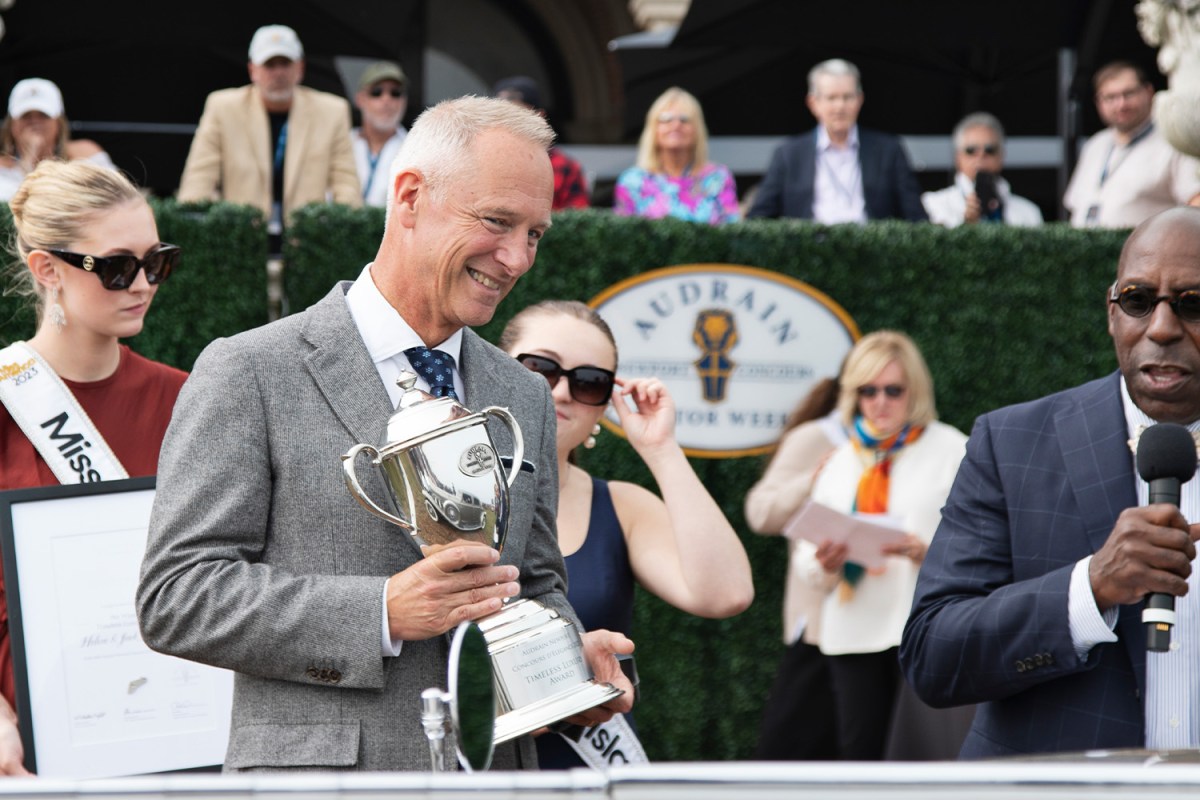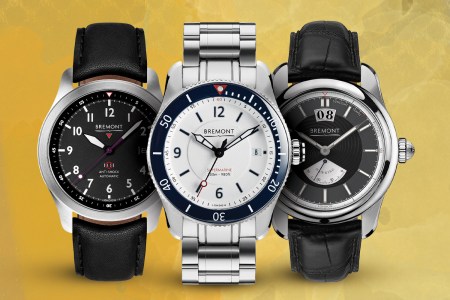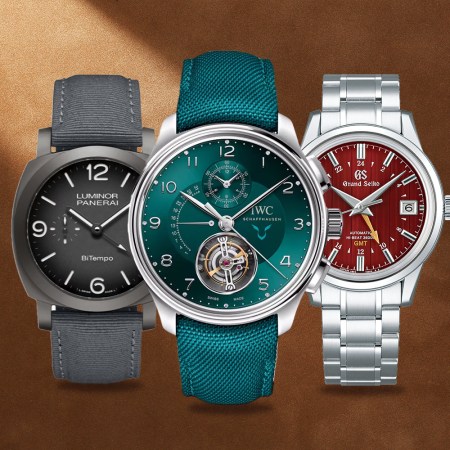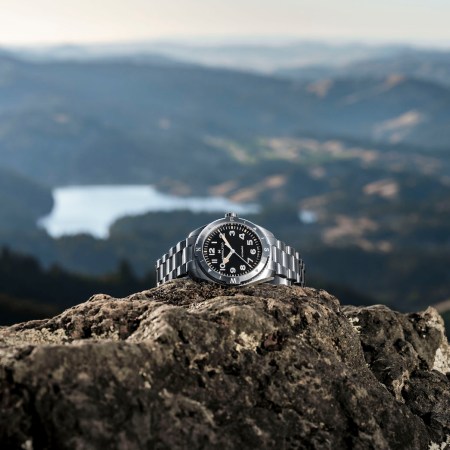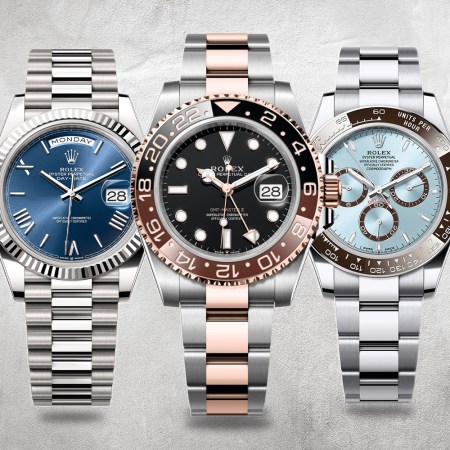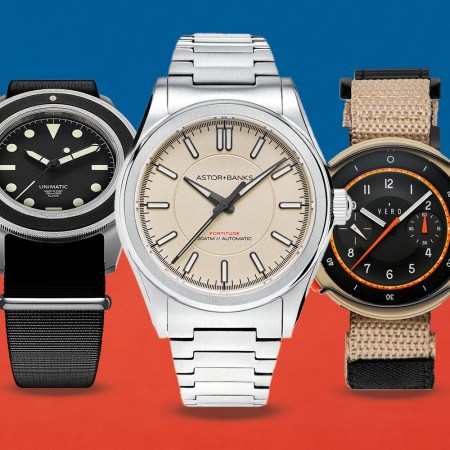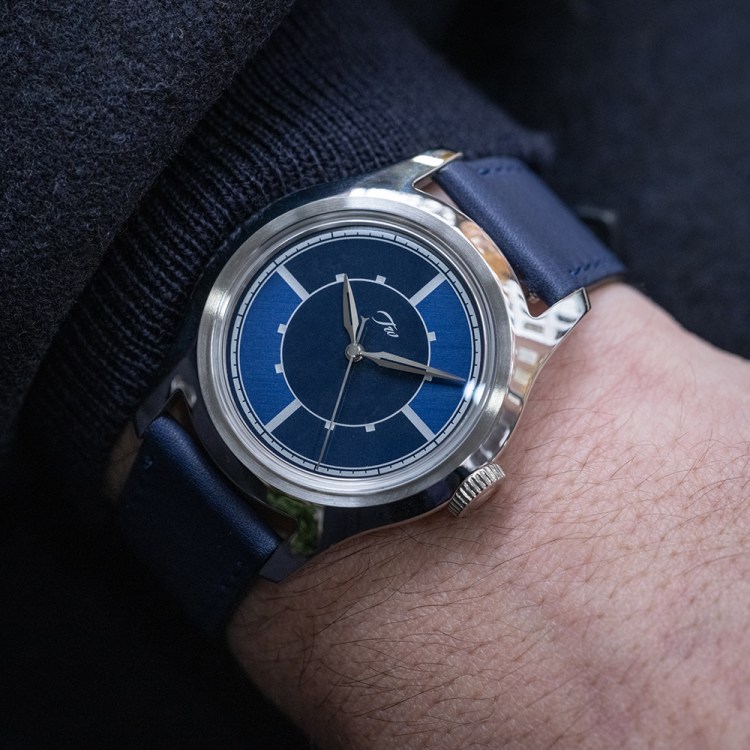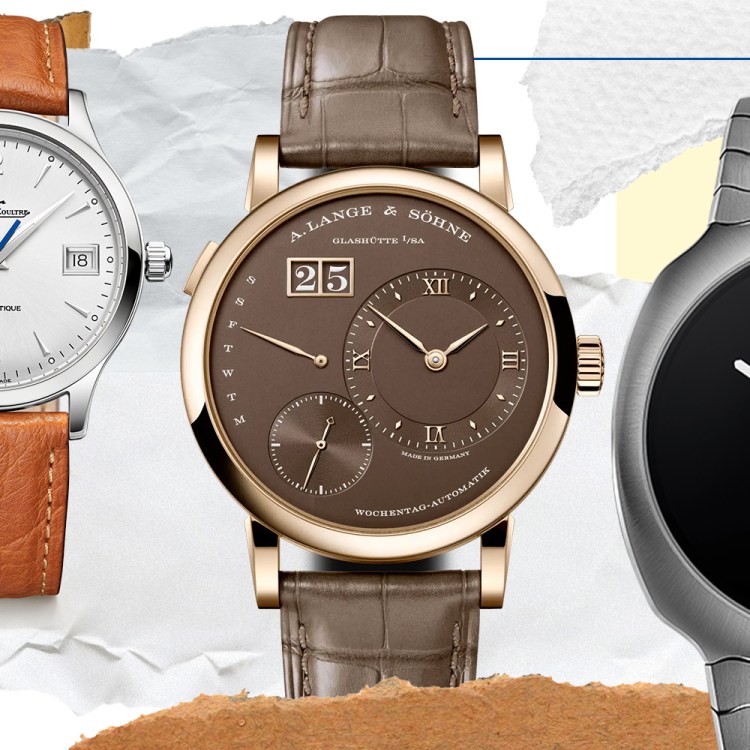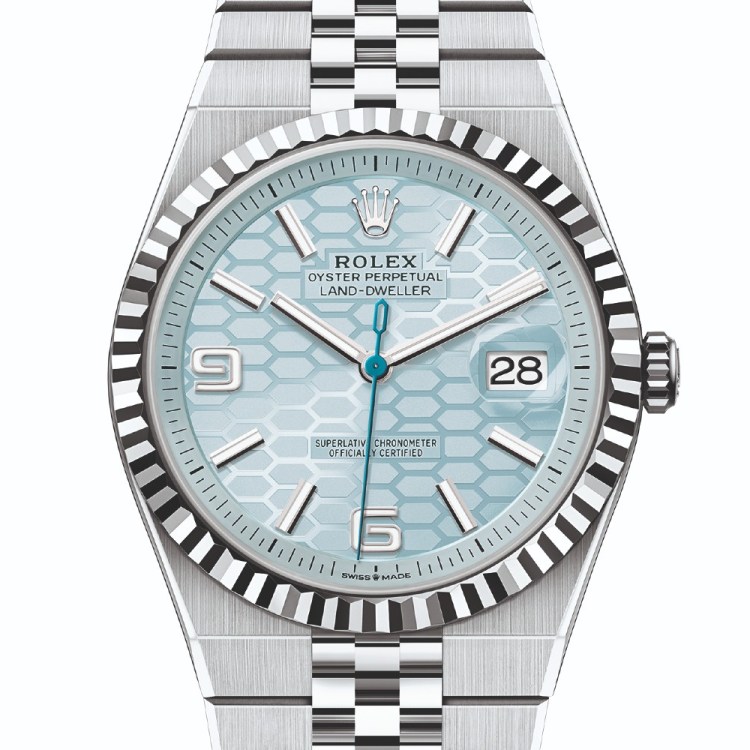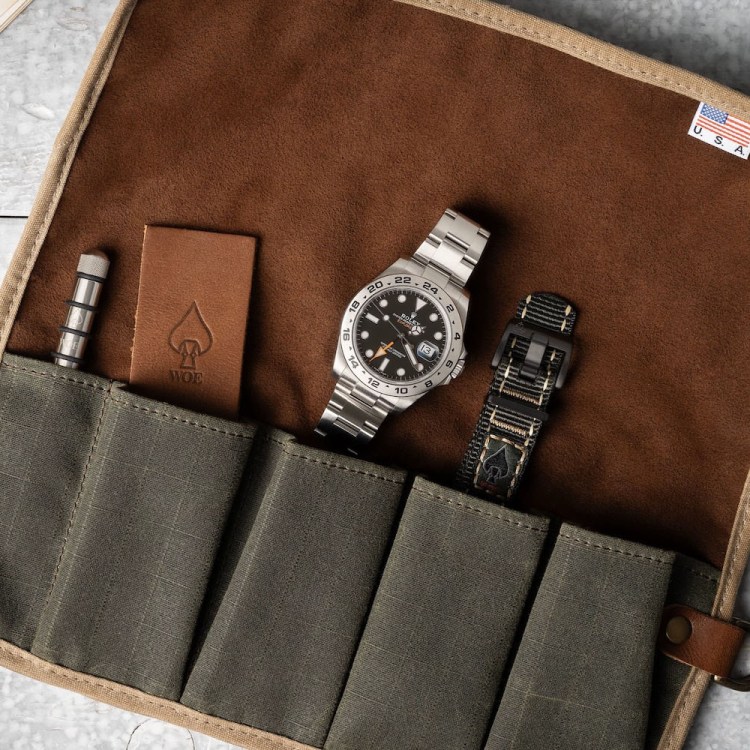In a private salon within the beautiful Chanler at Cliff Walk in Newport, Rhode Island, A. Lange & Söhne CEO Wilhelm Schmid was ebullient despite the pattering of rain on the windows. Maybe he figured that if the surfers on Easton Beach weren’t deterred, he couldn’t possibly be in bad spirits himself — even if the rain was putting a damper on the Audrain Newport Concours d’Elegance, the classic car show of which Lange is a sponsor.
Having ascended to the metaphorical throne of the German manufacture in 2011, Mr. Schmid has overseen myriad important developments, among which number the ludicrously complicated Grand Complication in 2013 as well as the Odysseus sport watch in 2019. And while the high-end watchmaker — whose products start in the multiple tens of thousands of dollars and reach into the millions — certainly has no dearth of customers, its promotional methods are much more subtle than those of many other brands. (“I always say, ‘People buy us — we don’t sell them,’” he quips.)
Part of that “attract, don’t chase” strategy involves the title sponsorship of two of the most famous, high-end auto concourses in the world, the Concorso d’Eleganza Villa d’Este in Italy and the Concours of Elegance at Hampton Court Palace in the UK. The synergy between high-end watch collecting and vintage car collecting is well known, with many collectors dabbling in both worlds. And while Lange doesn’t push its pricey wares on anyone who isn’t interested, having vitrines full of shiny Lange 1s, 1815s, and Odysseus sports watches steps away from vintage, multi-million dollar Bugattis, Ferraris, and Porsches certainly doesn’t hurt.
Having secured a foothold in the vintage car circuit in the UK and on the Continent, Lange sought a partnership with an American concours event that would attract collectors on their home turf. “I believe most of the big [car] collectors, they are American collectors,” Mr. Schmid says. With that in mind, Lange partnered with the Audrain Newport Concours d’Elegance, a four-day event that took place at The Breakers in Newport, Rhode Island during the Audrain Newport Concours & Motor Week. On the lawn outside the famous Gilded Age mansion were dozens of vintage cars from the 20th century spanning some of the most well regarded marques in the world. (Plus a highly sedate Jay Leno, to boot.)
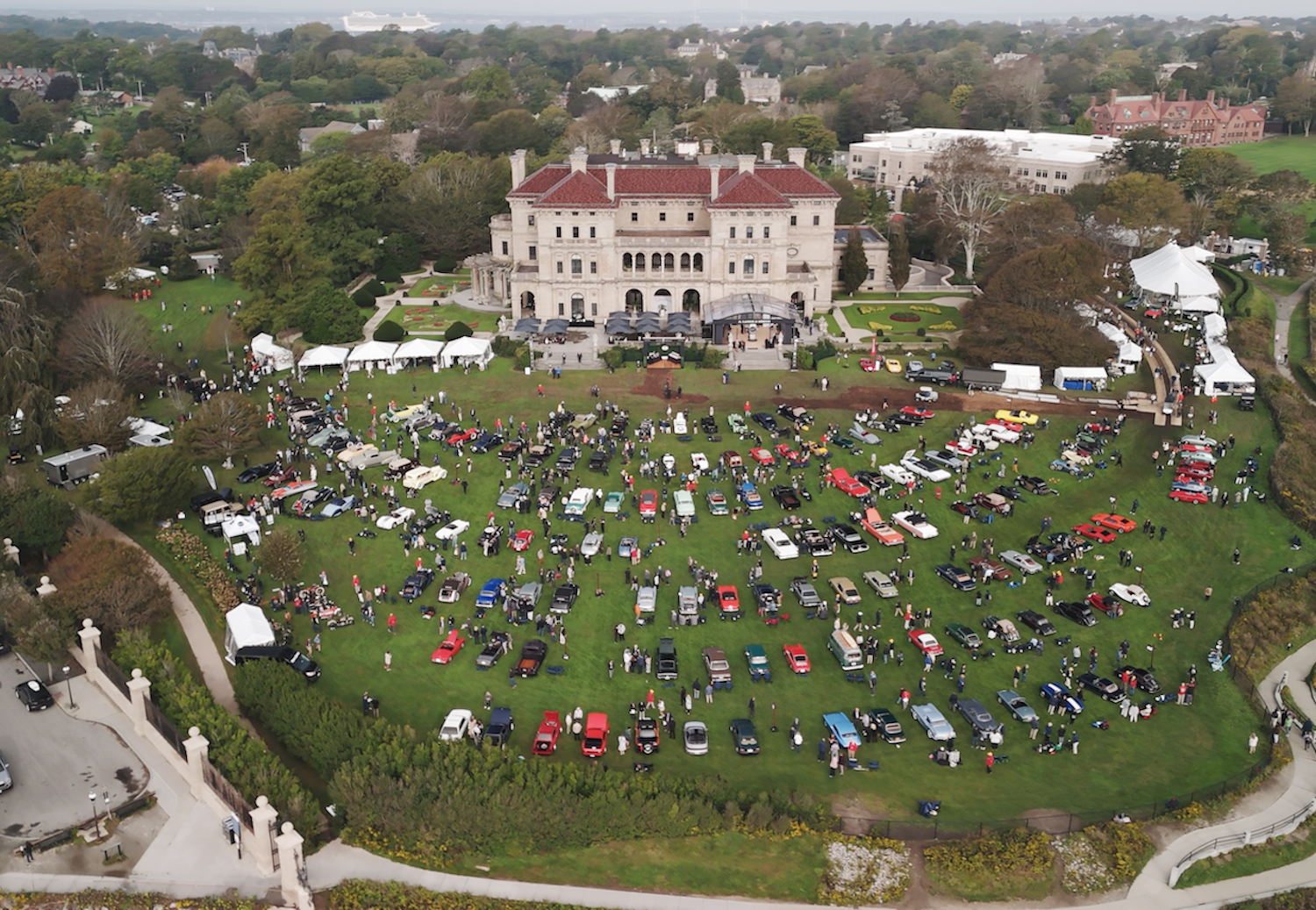
In a wide-ranging discussion with InsideHook, Mr. Schmid discussed this significant partnership, whether or not there is a “typical” Lange customer, and much more.
This interview has been edited for length and clarity.
InsideHook: The car-watch correlation is strong among collectors — those who are interested in or collect one segment are often interested in or collect the other. Can you speak to why this is, in your opinion?
Mr. Schmid: Let me be a bit more specific because it’s not, in our case, ‘cars and watches’ — it’s vintage cars and concours cars. There’s a big difference. We (A. Lange & Söhne) are not into car racing, or even vintage car racing. It’s about elegance, it’s about craftsmanship, it’s about the things that hands can do, because all these cars are handmade. There’s no car that just came from a factory, and they all epitomize, for their time, what car design was able to deliver — to the extent that even today we look at these cars and admire them and say, ‘Jesus, it’s a shame that we lost that.’
And I believe that’s the common denominator between the Concours d’Elegance and our watches, because we don’t need our watches to know the time. Your phone is a lot better for that, but if you want to see what a human being can do after a lot of struggling, if you love craftsmanship and hands that really do things, then you are a natural candidate for our watches and that’s why we like to connect the two things. It’s a playground where we meet like-minded people. It’s also interesting for our customers because to create proximity from time to time, you also have to do something which is not that obvious, and this [a concours] is the closest to the ‘not so obvious’ that we would do.
IH: Speaking about vintage cars — specifically cars at the Concours — is it because things like coachbuilding via Zagato or Pinafarina occur much less in contemporary automotive manufacturing, that that’s why Lange’s focus is on vintage and concourse cars?
Mr. Schmid: As I always say, a new car is a utility. New cars have to follow safety standards, all that. So that’s a very different kettle of fish. The vintage cars, they don’t follow that pattern. Maybe they did at that time, but of course they’re from like 50 years, 100 years, sometimes even longer back, and they were just expressions of what was possible as they were launched. And that’s why I think that connects better with our watches. We would never endeavor a partnership with a car manufacturer. It wouldn’t be in our interest.
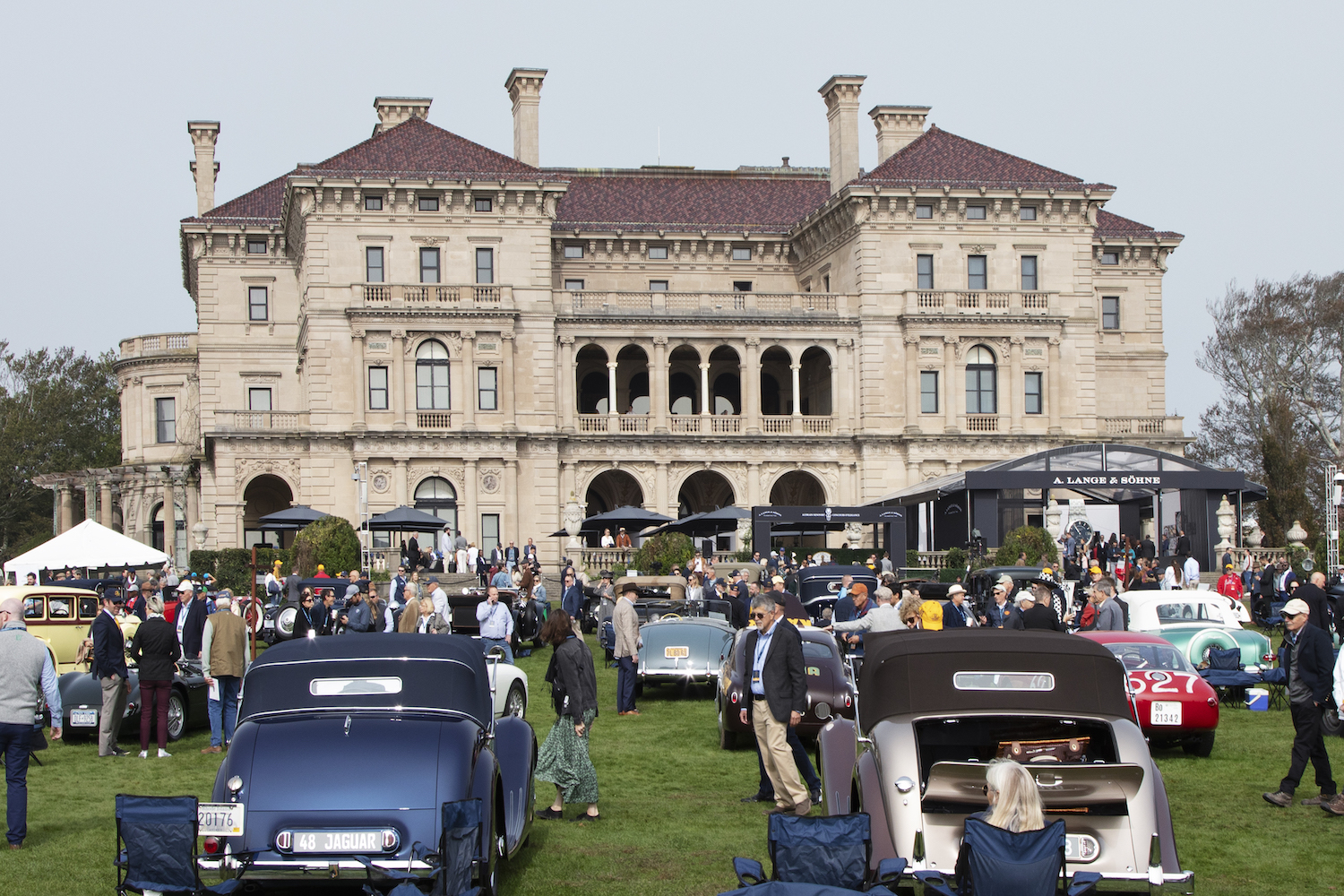
IH: You’ve participated in two European concourses thus far over the past 11 years. Was there always an intention at some point to bring this to the States?
Mr. Schmid: It developed. First of all, one needs to understand that I believe most of the big collectors, they are American collectors.
IH: Of Lange?
Mr. Schmid: Also of cars. If you go to most of the big European events, there’s a high percentage of American collectors, and then America’s an important market for us. So we decided eventually we have to do something for our American customers, and we’re in a good position between Boston and New York, which are two of our flagship stores. So it makes perfect sense.
IH: Is there a difference in the vintage-car-and-high-end-watchmaking correlation between a European and an American client or collector?
Mr. Schmid: Again, I can only talk about our collectors. I don’t see any cultural difference whether they come from the Middle East, from Asia or from America. They’re all people that are interested in fine watchmaking. They’re quite educated. It’s usually not an impulse purchase. It’s quite an educated purchasing decision and therefore, no, I don’t see a cultural difference.
IH: How do you approach a customer who is, say, a serious car collector but not yet remotely interested in fine watchmaking?
Mr. Schmid: We don’t. If there’s no initial interest, then there’s no initial interest. We’ll have a good time together [at the Concours], and they’ll appreciate what we do to make it a bit nicer than it would be without us. But then they’re not a customer, and that’s fine for us. We don’t do it to recruit customers. And again, it’s not like every watch collector will enjoy a weekend like this, and if not, then that’s the wrong client to bring here. So no, we would not force somebody to like us and to buy our watches. We don’t need to. I always say, ‘People buy us — we don’t sell them.’
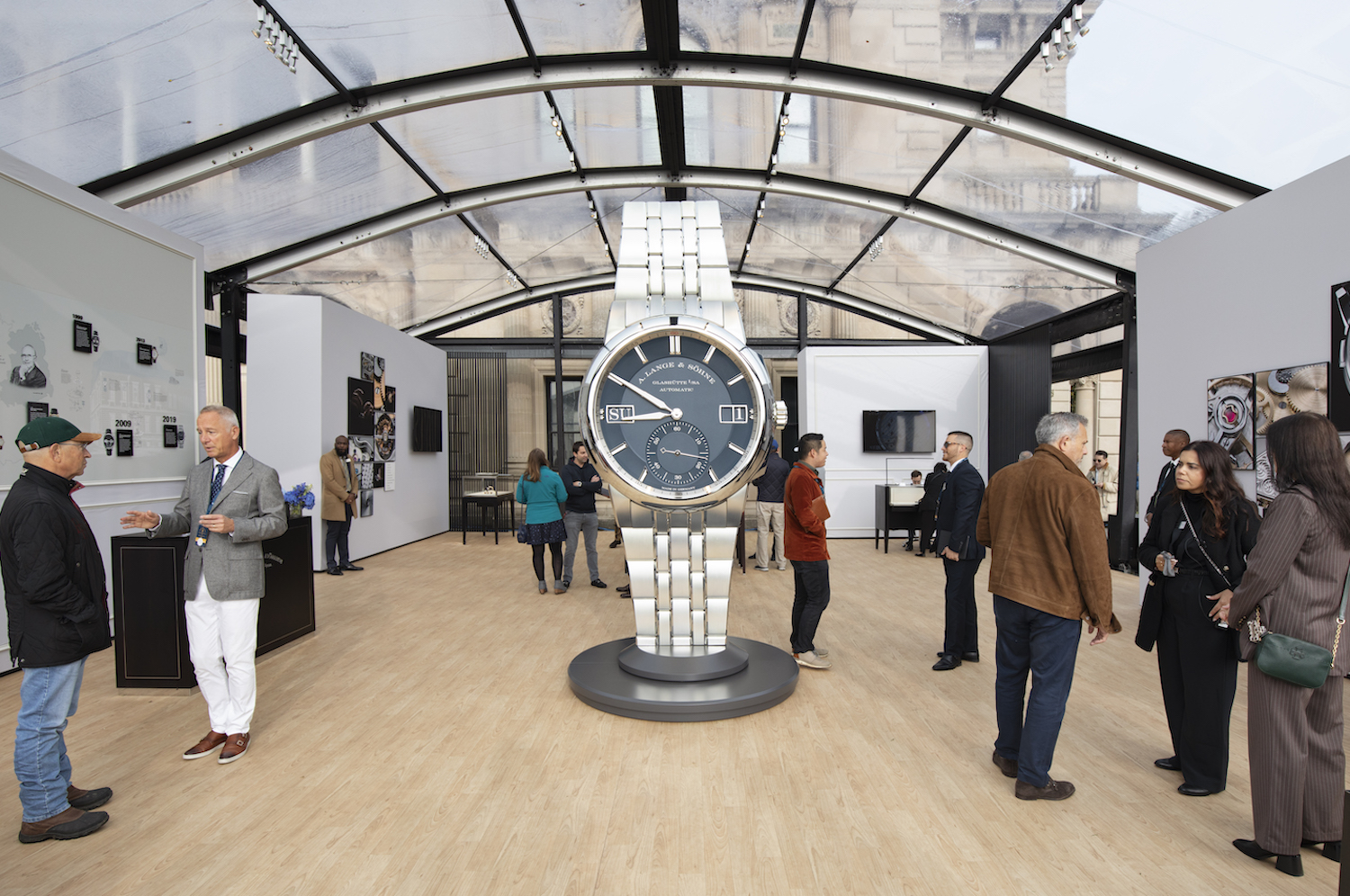
IH: With so many brands, there’s a focus on celebrity partnerships, there’s a focus on influencers — and that is not the Lange way.
Mr. Schmid: Not at all. We could care less.
IH: Let’s say you have somebody who is aware that ‘Swiss-made’ is traditionally the definition of fine watchmaking, and you’d like them to understand that there is an equivalent (or better) in German watchmaking. What is the Lange philosophy as regards marketing itself and spreading the word?
Mr. Schmid: I don’t think there is ‘Swiss watchmaking’ because it’s on many dials, and they start from 200 euros and they end up at a few million. So how can there be a ‘Swiss watchmaking?’ There’s ‘high watchmaking,’ and at that end of the market, I always compare it to a box of chocolates. It’s not just one thing that attracts you — it’s a combination. And what we offer is that a huge amount of craftsmanship that goes into each and every watch is done by real hands.
We don’t have an industrialized process. We are real craftsmen. We work with real watchmakers and not just with trained people, and we do everything to make our life difficult, but that’s why people who understand us like us, and that’s the package you want. Our watches are usually a bit bigger because they’re more robust. That’s the German way. Germans don’t like things that look good but don’t work. So that’s why we make our life difficult by producing a minute repeater and then waterproof it to three atmospheres. Not many do that in the industry because they want to free up the sound and not contain it in a watertight case, but that’s us, and we will not overrule our own DNA just to make our life comfortable for ourselves.
IH: Is there a target size for the brand in the near or long-term — or a size beyond which you believe that Lange’s type of watchmaking is not sustainable?
Mr. Schmid: Yes, I think there’s a limit to it. A natural limit. I wouldn’t put an output number on it because that’s always determined by how much capacity goes into each and every watch. We have watches where we put almost a man-year into them — into one watch — and then there are watches where we put a week in. That’s also one watch. So how can the output determine or define what we really do? It’s a capacity and that capacity can only grow with our ability to bring young people through the apprenticeship training, and then through the ranks.
And this year we welcomed 21 [new hires] in August. So in five years we have probably done 15, 16, minus those who will retire. And that is determining our potential capacity increase, and there’s a limit to it, because already this year, the 21 will be a stretch. Because if you have your own school (which we have), how to integrate the instructors into the different production processes — there is a limit to what you can do. And I think it’s a new limit for us. So let’s see how that will work out.
IH: So you don’t have a particular target production in mind? Would you like to be able to make the, say, 60,000 watches of a Patek or an Audemars Piguet?
Mr. Schmid: No, we will never be able to because it’s a different process. That’s an industrialized process, as we all know. We will do everything to protect our way of fine watchmaking — that’s the core of our existence. Everything else [we do] has to protect this way of fine watchmaking, and we are happy to change everything else if we can maintain and protect this because it’s the very reason why we are here.
Bremont Is Bringing Industrialized Watchmaking Back to England
A new manufacturing facility, a fresh round of investment, a new CEO — we discuss it all with co-founder Nick English and CEO Davide CerratoIH: All the brands seem to be mining their archives lately. At Lange, classical inspiration is certainly used, but in a much more contemporary way. Is there an overarching Lange design philosophy?
Mr. Schmid: There is actually a fundamental one, which is all around legibility. It’s the no-nonsense approach of a typical German. If you can’t read the time immediately, why have a watch? And then there is a hierarchy: It’s time, and date — that’s really important, whether it’s full-moon or not. All the adjustments that you need on a perpetual calendar to have the time accurate — you can’t make everything the same priority because then you have a cluttered dial. But that’s the fundamental design philosophy.
And then each family has that very recognizable identity. A Lange 1 — whether it’s a simple Lange 1 or the perpetual calendar — you look at it and immediately it’s a Lange 1. And sometimes it’s very subtle — the mirroring, or whether it’s a hand-wound or automatic, but a normal eye would not even see that immediately. But the eye will immediately see it’s a Lange 1. Or a Zeitwerk. Or an Odysseus. It [the recognizability] is exactly the same. And it’s good to have that [recognizability], but it’s not without challenges, because if you now want to increase the family, you have to find complications or you have to invent mechanisms to display complications without destroying the original design. That’s why a Zeitwerk will always look like a Zeitwerk. Is it a minute repeater — a day or a normal one? Immediately you put them next to each other and you see one family. Lange one? One family. Odysseus, be it the chronograph or not — one family. But again, it comes with challenges, sure.
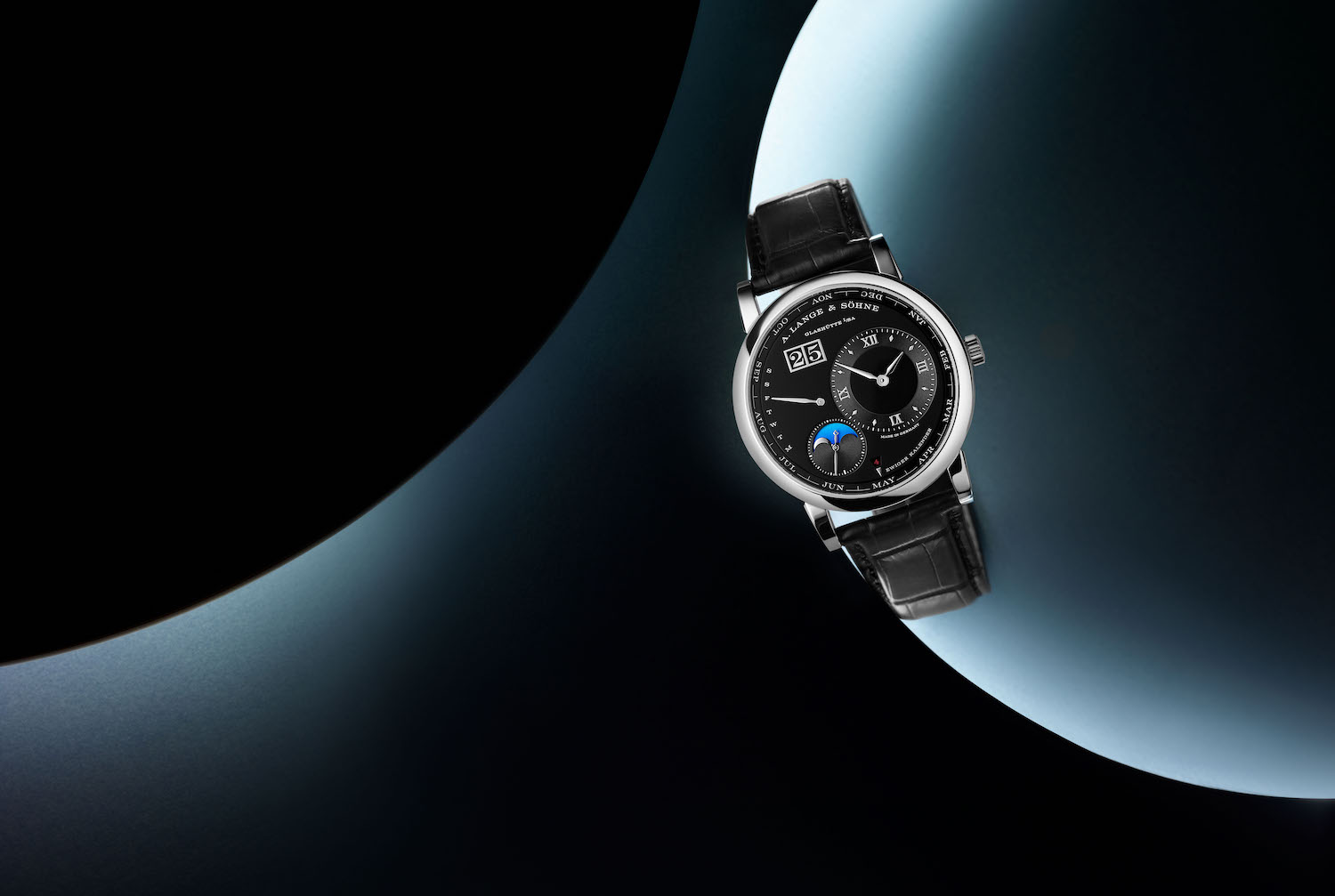
IH: Do you notice a sort of commonality between the people who collect Lange watches? Obviously they all have an attraction to really finely made mechanical things. But do they skew a certain way?
Mr. Schmid: I think it’s very much inside out. They look at the back first. [Editor’s note: from where they can see the movement via a sapphire caseback.] They want to indulge themselves in all these little paths, and they really live from the back to the front. They’re not going from front to back, which I think is a huge difference with many other customers. And they want to understand it. So I think yes, it’s a very educated decision, and that’s a common denominator [between collectors]. They really understand what that specific watch represents.
IH: There are clients who have many, many of your watches. We were talking a little bit today about clients coming in and saying, ‘Oh, I wish that there was something in the catalog that did X, Y, and Z.’ Is that ever considered by your product teams?
Mr. Schmid: No, no. And it’s impossible to do so to be honest, because first off, a customer’s going to change his mind 10 times in a year and it takes us up to seven years to develop a watch. So how can you link the change and taste and requests with the time it takes us to develop a watch? So you have to work fairly independently from that.
IH: And if a good customer wants a custom variation, the way they might request something from, say, Patek?
Mr. Schmid: No, we wouldn’t. There’s a clear no. Because I set [production at] five and a half thousand pieces, and we have 70 references in the current production. So if you do the math, that’s about 80 watches [per reference] a year. That is already so tiny. Tiny and individual. We don’t need to go further than that.
IH: Lastly, Lange makes minute repeaters that sound incredible. Do you happen to know: Are there any musicians who collect these [for their sound]?
Mr. Schmid: Look, it’s like our taste; our hearing is also very different. There are people that are more trained and then with age, we usually lose a few frequencies that we can’t hear anymore. I do know a collector who loves collecting minute repeaters in different materials because of the different sounds. That’s not unusual.
Generally, I believe the rhythm is almost more important than the sound. Again, hierarchy — everything is important, but with a lot of these minute repeaters, you can’t count [the time]. The idea [of a minute repeater] was that in the old days, without light, you could count [the sounds] and then you would know what the time was. So we greatly emphasize the rhythm. It all starts with it, and then it has to be clear and crisp. But again, it’s like how some people like Burgundy and others like Bordeaux wines — they’re both great, but different tastes are different tastes. I think sound is very much the same and some people enjoy the differences.
This article appeared in an InsideHook newsletter. Sign up for free to get more on travel, wellness, style, drinking, and culture.
